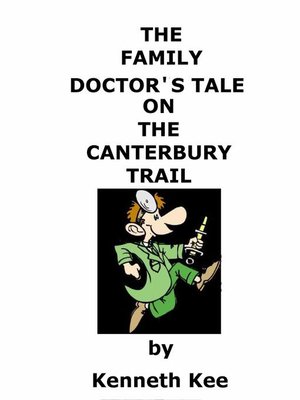
Sign up to save your library
With an OverDrive account, you can save your favorite libraries for at-a-glance information about availability. Find out more about OverDrive accounts.
Find this title in Libby, the library reading app by OverDrive.



Search for a digital library with this title
Title found at these libraries:
| Library Name | Distance |
|---|---|
| Loading... |
This new book is the fictional story of a medieval family doctor who joins the Canterbury trail to pay homage to the shrine of Saint Thomas Becket (Archbishop of Canterbury) at Canterbury Cathedral.
Saint Thomas Becket was treated as a saint and martyr by the Catholic Church.
The medieval doctors had very little knowledge of the human anatomy and depended on very basic books and drawings
Hippocrates always stressed that doctors should cautiously observe symptoms of the patients and take notice of them.
He also knew that diet and exercise and keeping clean were important for health.
Hippocrates also rejected all magic and he believed in herbal remedies.
The teachings of medieval doctors were based on Hippocrates' bodily humors theory.
This theory suggested that every human body contains four principal fluids or humors, black bile, yellow bile, phlegm and blood.
For a person to stay healthy these fluids had to be in balance.
If a person had too much of one humor they fell ill.
For instance if a person had a fever he may contain too much blood.
The treatment was to let the patient bleed to release the blood (blood letting).
Cauterization, a procedure used to burn the skin or flesh of a wound, was done to prevent infection and stop profuse bleeding.
To do this procedure, doctors heated a metal rod and made use of it to burn the flesh or skin of a wound.
This would cause the blood from the wound to clot and eventually heal the wound
"Wet" cupping, a form of bloodletting, was done by making a slight incision in the skin and drawing blood by placing a heated cupping glass on the incision.
"Dry cupping", the placement of a heated cupping glass (without an incision) on a particular area of a patient's body to alleviate pain, itch, and other common ailments, was also used
The heat and suction from the glass induced the blood to rise to the surface of the skin to be drained.
This theory had a close link to the theory of four elements, i.e. earth, fire, water and air, with earth present in the black bile, fire in the yellow bile, water in the phlegm and blood containing all four elements.
With his brother, he rode with Chaucer and his pilgrims and listen to their Canterbury Tales as told by Chaucer.
He contributes his own story about Saint Luke who is the patron saint for all doctors.
TABLE OF CONTENT
Introduction
Chapter 1 Prologue
Chapter 2 Meeting the Pilgrims
Chapter 3 The Journey
Chapter 4 The Ploughman
Chapter 5 The Second Nun
Chapter 6 The Villagers
Chapter 7 Other Stories
Chapter 8 Chaucer Retraction and The Family Doctor's Tale
Epilogue







